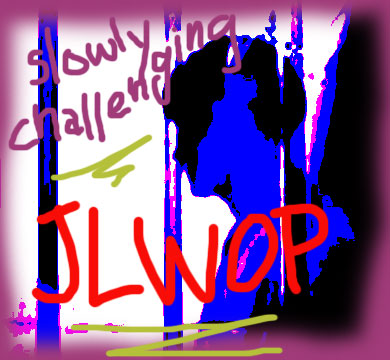For exactly zero discernibly logical reason—except for out-and-out spinelessness—the state assembly defeated SB 399, the Fair Sentencing for Youth Act, this past Tuesday in the final legislative session of the year.
That, assuredly, is the very bad juvenile justice news of the week.
But the good news is that, the very next day, Wednesday, the 2nd Circuit Court of Appeal in LA, had a very different take on what may be defined as a reasonable (and Constitutional) prison sentence, when it comes to kids—in particular a kid who has not killed anybody.
Here are some clips from the San Francisco Chronicle’s story on the ruling:
After the Legislature killed a Bay Area lawmaker’s bill to give juveniles serving life sentences without a chance at future parole, a state appeals court took a step in the other direction Wednesday by overturning the 84-year prison term of a 16-year-old gang member convicted of robbery and carjacking.
The sentence is the practical equivalent of life without possible parole and violates the constitutional ban on cruel and unusual punishment, said the Second District Court of Appeal in Los Angeles. The court told the trial judge to resentence Victor Mendez to a term that would give him a chance to gain his freedom someday if he shows maturity and rehabilitation.
The ruling followed a U.S. Supreme Court decision in May that banned life-without-parole sentences for juveniles convicted of crimes other than homicide. That ruling applied to four youths in California prisons, but did not affect another 250 inmates serving the same sentence for murders committed at ages 16 or 17.
Those youths would have been covered by Sen. Leland Yee’s bill, SB399, which was defeated in the Assembly in the final legislative session of the year Tuesday.
It would have allowed juveniles serving life without parole for murder to ask a judge, after 15 years in prison, to reduce the sentence to 25 years to life. A favorable decision would allow the inmate to apply 10 years later to the parole board, which usually waits many years before approving a prisoner’s release.
Just to be clear, nobody’s pretending that Victor Mendez, the former 16-year-old in question, was some kind of angel. But we are talking about proportionality—and whether or not we believe that given time and help, a kid can change.
Wednesday’s court ruling involved two young gang members who stole a car at gunpoint and committed several robberies in Los Angeles and nearby communities over a 14-hour period in June 2007. The court said Mendez, who turns 20 today, had been in trouble with the law since age 10 and was sent to a youth detention center for robbery at 12.
While upholding the youths’ convictions, the court said the trial judge had exceeded constitutional limits by sentencing Mendez to 84 years, making him ineligible for release until age 88.
Although his crimes were serious, the court said, he did not injure anyone or fire his gun, and his term was longer than the law prescribes for such crimes as rape and murder.
The sentence was “grossly disproportionate to the crimes committed and the culpability of the defendant,” Justice Kathryn Doi Todd said in the 3-0 ruling.
The state attorney general’s office said it was considering its options, which include an appeal to the state Supreme Court.
(Read the rest here.)
And find the court’s ruling here.
PS: A HELPFUL NOTE TO CALIFORNIA’S STATE ATTORNEY GENERAL
Jerry, about that SCOTUS appeal that you’re considering….. Don’t do it. Really. Don’t. If you still aren’t convinced, reread Graham v. Florida. (You’ll thank me for this advice later, honestly, you will.)

AND SPEAKING OF CASES THAT AG JERRY BROWN NEEDS TO BACK OFF ON IMMEDIATELY: BRUCE LISKER
Matt Lait and Scott Glover report that, “after serving 26 years for his mother’s killing, Bruce Lisker was freed last year after his conviction was overturned. The state sought this week to have him returned to prison on procedural grounds.”
You’ve got to be kidding.
Read the story.
There’s a just and moral choice for Jerry Brown’s office to make here, and sending Bruce Lisker back to prison on a filing technicality—while admitting that he’s factually innocent—ain’t it.


Almost all juveniles sentenced to lengthy sentences will emerge from incarceration as even more dangerous sociopaths than when they went into custody. When a juvenile reaches the age of 21 (25 in some cases) they are transferred to State Prison where any attempt at rehabilitation is finally abandoned. There really is no viable option but to incarcerate them until they are too old to represent a threat to society. Of course, if there were more efforts to tackle the root causes of juvenile crime, there would not be much of a problem.
As for Lisker, the AG’s argument is incomprehensible and illogical. Lisker was undoubtedly involved in his mother’s murder, however, trying to prove that beyond a reasonable doubt after the passage of so many years, is not possible. Lisker got lucky because of bad police practices. That’s a long way from being innocent, but he does get to stay out of prison.
Whose idea is it to have no attempt at rehabilitation in state prisons, Jack?
Typically the first stop for an offender in the state system is a distribution prison, e,g, Wasco near Bakersfield. Here he will be observed and tested for several months( for the purpose of grouping, not rehabilitation) before being sent to a permanent placement. Although some of the prisons will provide interventions any thought of rehabilitation for a prisoner who will not be released until he’s 80 is out of the question. This further begs the question: Why in the world would a judge and jury sentence a juvinille to a sentence this long? There are some very false assumptions going on here. First, it is assumed that the offender committed the crime because of bad character, ie. a “bad seed” type. Second, it is assumed that this character structure is set in concrete and cannot be changed. Both assumptions are entirely incorrect, in fact they are archaic. Over the years research and observation in human development have shown quite an opposite picture as to why these juvinilles commit such violent crimes and have given us means for successful intervention. The fact that the justice system does not look at the overwhealming evidence for this and continues to impose these creul, costly punishments is very sad indeed.
Are you trying to convince people there’s no such thing as a “bad seed”? Are you trying to say all bad behavior can be changed with intervention of some type? I would beg to differ.
As far as I can read, Sure Fire, no, that’s not what he said.
Clarke, juveniles who are prosecuted as adults (they have to be to get LWOP), are still in the juvenile system until they reach 21 or in some cases, 25. Then they get into state prison where there will be no rehabilitation of any meaningful variety. As for the “bad seed” character, any juvenile who winds up with a LWOP sentence is, by very definition, a bad seed. They are the worst of the worst, hard core gang bangers, usually by virtue of being raised by gang bangers in a culture more comfortable with gang banging than choir practice or the Boy Scouts. Both the juvenile system and certainly the state prison system inadvertently (?) encourage gang alliances by segregating inmates first along ethnic lines and then on gang affiliations. The bottom line is that once a juvenile has descended to the depths of depravity necessary for a life sentence, there is no hope of this person ever being integrated back into society. They are monsters manufactured by a lack of education, opportunity, family values, and are abandoned by politicians too worried about offending minority communities with any meaningful gang intervention. Yes it’s very sad indeed, but don’t blame judges (and juries never decide sentence unless it’s a death penalty decision), blame a system that does nothing to prevent the creation of these monsters and has nothing to offer them once they’ve succumbed to the gansgter lifestyle.
Jack, you’re not worried about offending minorities. We know that!
The term “sociopath” has been replaced in the diagnostic manuals with Antisocial Personality Disorder, but this designation does not apply until the age of 18. Children showing up with the symptoms leading to this condition are diagnosed as having a Reactive Attachment Disorder (RAD), a more operational term because it gets to the core of the problem, which is an inability to appropriately attach or bond with others. This is characterized by a lack of empathy; people are seen as objects. You may see this as criteria for a “bad seed” but the fact is there are clinics in this country that are working very successfully with the condition. The programs are typically 8-10 weeks long and involve an intense diet of interpersonal psychotherapies along with neurofeedback (EEG biofeedback) a method that trains the brain toward greater, more normal regulation. One very significant finding in human development research over the past 20 years is that the brain is very plastic; it can change. I therefore hesitate to refer to any juvinille as being a “bad seed”. Unfortunately, there is no datbase for juvinilles who commit these very serious crimes but based on the success that is showing up thus far with RAD research and field reports I really wish judges would drop the “without parole” part.